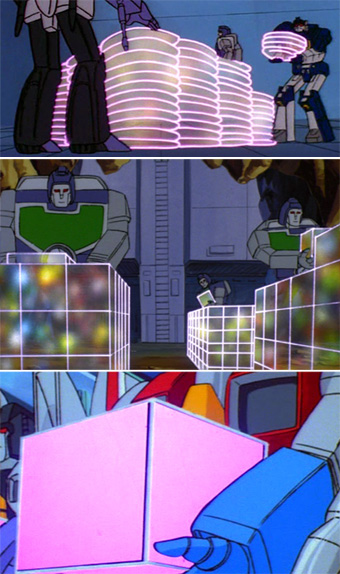Tbh, I don't really mind if they have a cheat, but in our universe, there's no great store of anti-matter anywhere we can see. We'd see it annihilating with matter. They really don't like each other and it's a lot of energy. Our cosmological models for a long time have assumed, based on the evidence, that matter and anti-matter were equal but physical laws are slightly asymmetric and all of the anti-matter was destroyed. This was back when the whole universe was very hot and dense, so there was nowhere to run or hide. Small amounts of anti-matter (like positrons and anti-protons) get made now and then from cosmic rays or other collisions, but it's all quickly destroyed because it inevitable comes in contact with matter. So I'd prefer them having some cheat for making it than "mining" it in any way. I guess violations of conservation of energy in science ficiton don't bother me as much -- as weird as that is to say aloud.*Well, the existence of matter could lend credence to already existing antimatter. Where is it in the universe and how we could move it? idk. We are talking about a game inspired by existing science fiction. They all seem to use anti mater as a reactor, like we today use fission and soon fusion.
Now if you want to say that using it that way breaks your immersion, because it violates the 1st law of thermodynamics and it's not hard science fiction. I can see that, but then I'd point to FTL. And how that violates the law of relativity.
If FTL is believable, net positive energy is to.
Edit:
Which then Makes me change my stance on Dyson Spheres. I want 150% Effective Dyson Spheres PDX!!!!! lol
But that's why my real point is if they can do that, they wouldn't make ring worlds. Wouldn't be efficient and not as safe and secure as a habitate on the scale of a planet or a bit bigger. Though given how few people can fit on ring-worlds, habitats like that make more sense. I suppose if there was a Stellaris 2, I'd want systems to get colonized, and you can build things like large habitations in systems and people live wherever they can. Habitat spam is probably realistic, but it wouldn't be a big deal if colonizing was abstracted to a system level where you build improvements for the system itself.
Anyhow, back to Dyson Spheres. I'd just like if they were a bit more realistic. Cost varies based on the star (bigger stars are more expensive), and energy output also varies (blue stars generate a lot more energy than our sun, for instance). Or just turn it into increasing levels of dyson swarms, where bigger stars can have higher levels. You'd have to adjust swarms to provide energy based on the star and not this weird energy deposit thing on stars. You know....energy is really weird in this game.
*Yes, I read everything I write as I write it.**
**This is a lie


